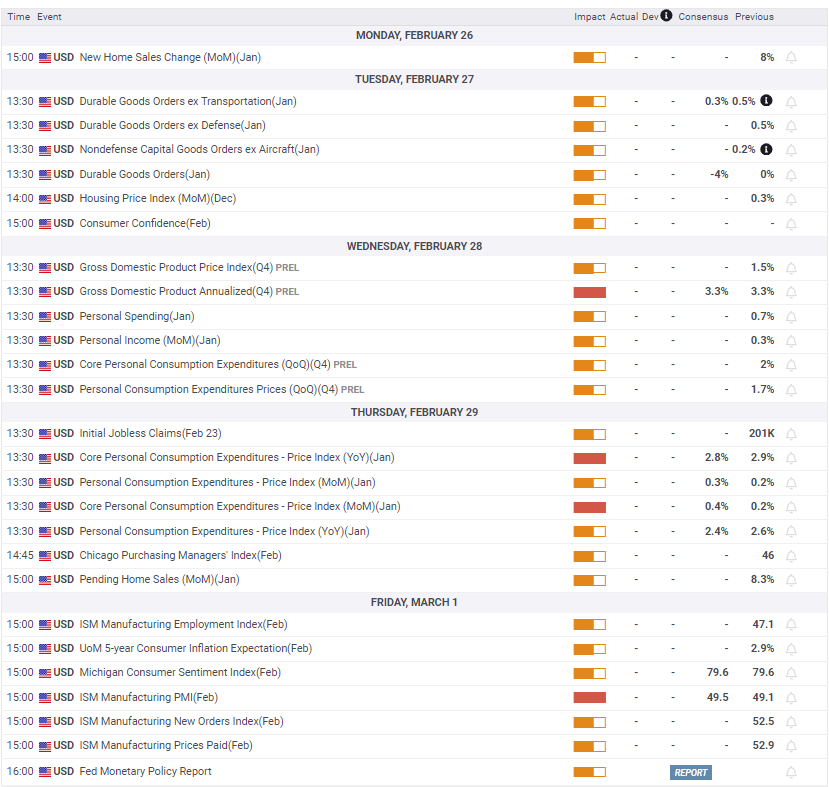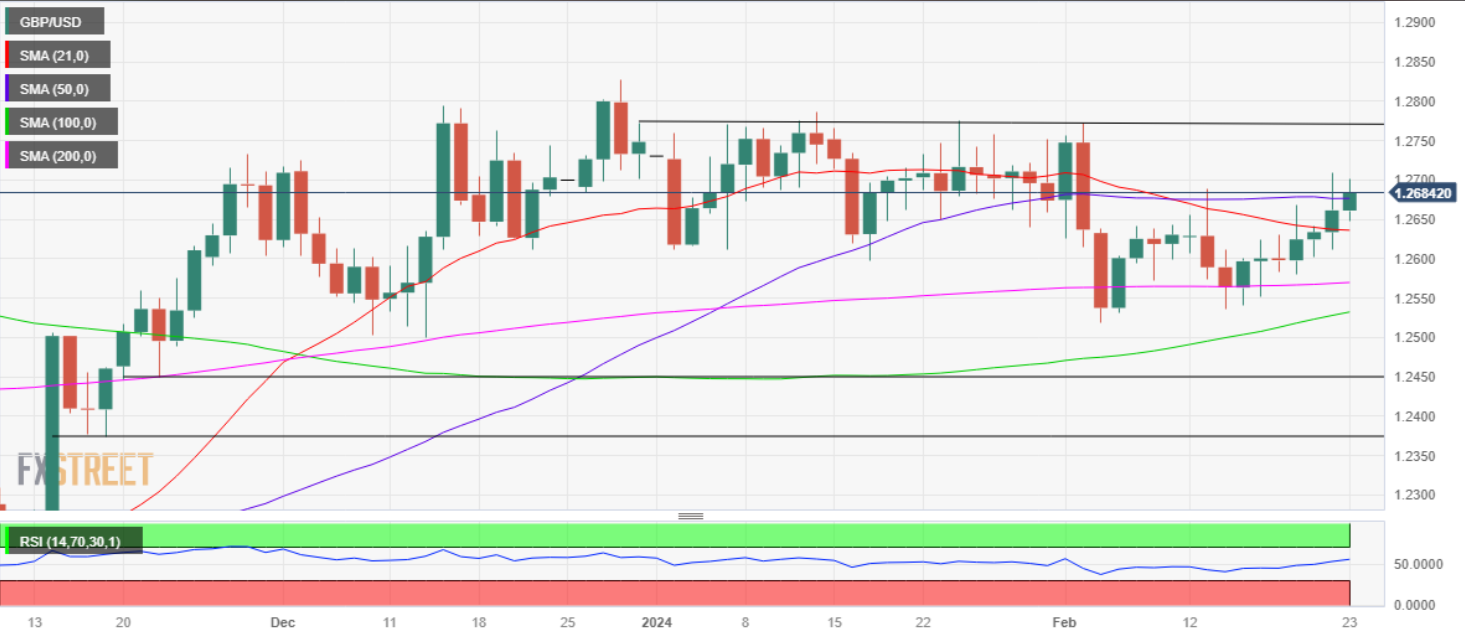- Pound Sterling staged a comeback on the US Dollar pullback.
- US economic data and Fedspeak to dominate GBP/USD price action next week.
- Looking ahead, GBP/USD is set to extend its upswing so long as 200-day SMA holds.
The Pound Sterling (GBP) booked the first weekly gain against the US Dollar (USD), snapping a five-week bearish momentum. GBP/USD staged a comeback from weekly lows to hit a fresh three-week high just above 1.2700.
Pound Sterling benefits from sustained US Dollar weakness
The sentiment around the US Federal Reserve (Fed) interest rate cut expectations drove the GBP/USD price action in the holiday-shortened week. The pair maintained the previous week’s range, trading subdued on Monday, as American traders enjoyed a long weekend on account of the Presidents’ Day holiday.
Thereafter, GBP/USD picked up the recovery momentum, as the US Dollar maintained a submissive tone, despite increased bets for delayed Fed rate cuts amid hawkish FOMC Minutes and commentaries from Fed officials.
Further, mixed US economic data releases combined with the AI optimism-led tech boost and global stock rally kept the downbeat tone intact around the US Dollar. US S&P Global Manufacturing PMI improved to 51.5 from 50.7 in February, while S&P Global Services PMI edged lower to 51.3 from 52.5. Meanwhile, US Initial Jobless Claims fell by 12,000 to 201,000 for the week ending February 17, the Labor Department reported Thursday.
GBP/USD rallied as high as 1.2709 amid a sustained US Dollar retreat. Still, Pound Sterling sellers returned at higher levels as they weighed the dovish comments from Bank of England (BoE) Governor Andrew Bailey, delivered during his testimony before the UK Parliament’s Treasury Select Committee (TSC) in the early part of the week.
Bailey said, “we don’t need inflation to be back at the target before cutting rates.” “Markets expect rate cuts this year, we do not endorse the market curve, but it is not unreasonable for the market to think that,” he added.
The Pound Sterling struggled to hold on to its renewed upswing, as the downside in the US Dollar was cushioned by buoyant US Treasury bond yields. US yields drew support from the Fed policymakers’ continued pushback against early and aggressive Fed rate cuts.
Additionally, mixed S&P Global UK Manufacturing and Services PMI data also sapped the confidence of Pound Sterling buyers, especially after the UK economy entered a technical recession. The seasonally adjusted S&P Global/CIPS UK Manufacturing PMI improved slightly from 47.0 in January to 47.1 in February, below the market consensus of 47.5. Meanwhile, the Preliminary UK Services Business Activity Index stayed unchanged at 54.3 in February, beating the consensus forecast of 54.1.
Week ahead: Top-tier US data in focus
Following a holiday-shortened and relatively data-light week, GBP/USD traders look forward to a host of top-tier US economic data releases, as the UK calendar remains a quiet one.
Monday will see a couple of BoE policymakers speaking, followed by the US New Home Sales data. BoE officials Sarah Breeden and Huw Pill will take up the rostrum. On Tuesday, the US Durable Goods Orders and Conference Board Consumer Confidence data will keep traders entertained. BoE policymaker Dave Ramsden will also make an appearance that day.
The US docket will feature the second estimate of the fourth-quarter Gross Domestic Product (GDP) on Wednesday alongside the release of the Personal Spending and Personal Income data.
The US weekly Jobless Claims will be reported on Thursday but the key focus will be on the Core Personal Consumption Expenditures (PCE) – Price Index, the Fed’s preferred inflation gauge.
Friday will be a busy day, with the final prints of the S&P Global UK and US Manufacturing PMI on the cards. However, the main event risk will be the ISM Manufacturing PMI.
Markets will continue to closely scrutinize the speeches from the Fed policymakers for gauging the timing of the first-rate cut this year.


GBP/USD: Technical Outlook
The short-term outlook for GBP/USD suggests that the recovery momentum is likely to gather traction on a sustained break above the 50-day Simple Moving Average (SMA) at 1.2678.
The 14-day Relative Strength Index (RSI) is sitting just above the 50 level, suggesting that there is more room for upside in the pair.
If the Pound Sterling buyers manage to close the week above the 50-day SMA at 1.2678, a fresh uptrend could be initiated toward the 1.2750 psychological barrier.
The next topside barrier for the pair is seen at the static resistance near 1.2775. The December 28 high of 1.2828 will be next on the buyers’ radars.
On a failure to close the week above the 50-day SMA of 1.2678, Pound Sterling could see a temporary pullback toward the 200-day SMA at 1.2570.
However, the 21-day SMA at 1.2630 could offer some support to Pound Sterling buyers prior.
A convincing break below the 200-day SMA at 1.2570 will put the 100-day SMA at 1.2532 in sight. Further south, the 1.2450 psychological level could test bullish commitments.






